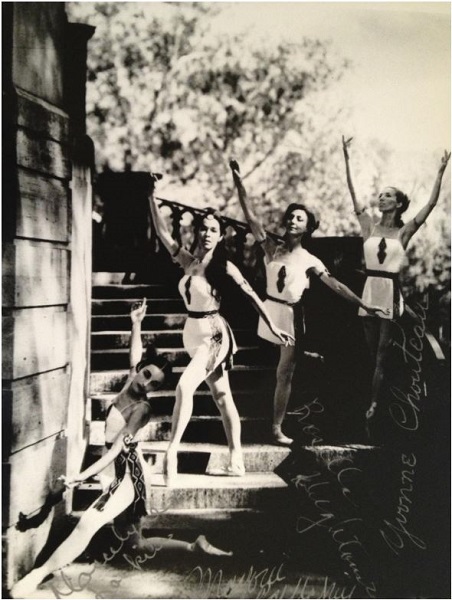- Written in 1967, The Four Moons is Ballard’s third ballet, commemorating the 60th anniversary of Oklahoma’s statehood.
- The work was written for four Native American prima ballerinas: Yvonne Chouteau (Cherokee), Rosella Hightower (Choctaw), Moscelyne Larkin (Shawnee), and Marjorie Tallchief (Osage).1
- Each of the four solos was created to “convey the spirit and characteristics of the tribe she represents.”
- The ballet is divided into four sections:
- Overture (Landrush, Statehood, Pow-Wow)
- Dance of the Four Moons
- Solo Dances (Shawnee, Choctaw, Osage, Cherokee)
- Finale (Pas De Quatre)
- In contrast to his first two ballets, which depicted mythology and folktales, The Four Moons is a historically-based work depicting The Trail of Tears.2

Sources
- Dianna Everett, “Ballard, Louis Wayne,” The Encyclopedia of Oklahoma History and Culture, accessed October 13, 2023, https://www.okhistory.org/publications/enc/entry?entry=BA009.
- Karl Erik Ettinger, “Louis W. Ballard: Composer and Music Educator,” (PhD Diss., University of Florida, 2014), 103-106.
Cut IDs
25749
